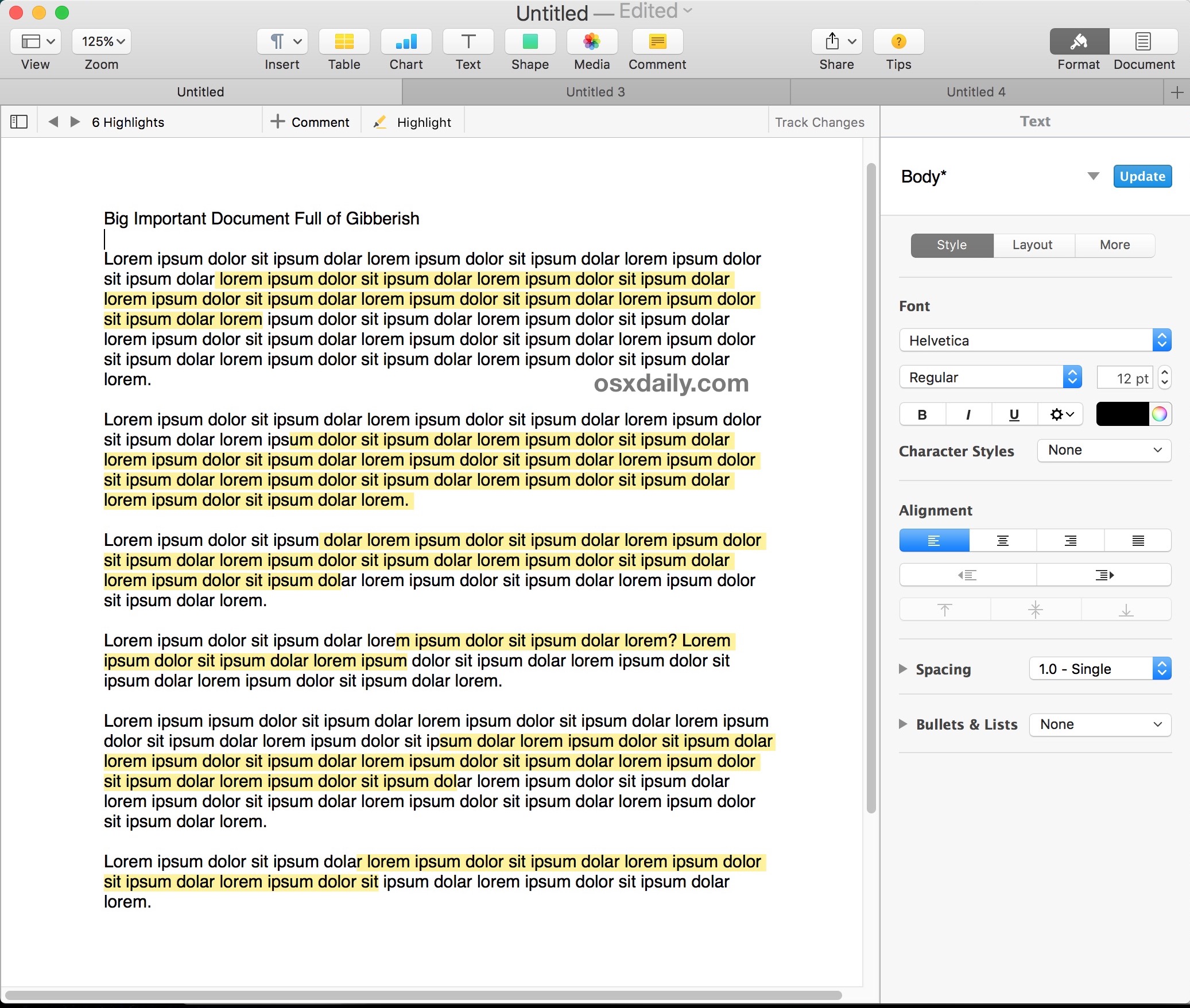
(How you add macros to the QAT or associate a shortcut key with them has been covered in other WordTips. (And, of course, the one that removes the highlighter color.) You can then add each of the macros to your Quick Access Toolbar or, if you prefer, associate a shortcut key with each of the macros so you can apply the highlighting using a shortcut. The trick is to create a short macro, just like this for each color you want to apply. In addition, if you want to remove the highlighter color, you can use the wdNoHighlight constant. The 15 possible colors that apply to the Highlighter tool's palette are as follows: wdYellow, wdBrightGreen, wdTurquoise, wdPink, wdBlue, wdRed, wdDarkBlue, wdTeal, wdGreen, wdViolet, wdDarkRed, wdDarkYellow. Note that the color is assigned to the text using a color enumeration (constant) at the right side of the equal sign. For instance, here is the macro to apply the yellow color to the selected text: It is this second item (a background shading color) that is closest to a highlighter color, but they are still not quite the same in how they are treated by Word.Īssuming you really need to use highlighter colors, the only real way to do it is to create macros that apply each of the colors you want used. All you can do is to specify in the definition either a text color or a background shading color. The problem is, you cannot use a highlighter color as part of a style definition. Rob wonders if it is possible to set up multiple highlighters, each with a different color, so that it only takes a single click to pick which highlighter color he wants to use.Ī good number of people suggested the approach of creating a style to handle this. He finds it very tedious to change color each time he wants to highlight something. Move the pointer over the various themes or theme colors to view how the theme changes the shading color that you applied in the document.Rob uses different colors of highlighting for different purposes, all in the same document. If you choose a new theme, you change the theme font as well as the theme colors. On the Page Layout tab, in the Themes group, click Themes or Theme Colors. NOTE If you used a color under Standard Colors or More Colors, the color will not change when you change the theme colors. If you used a color under Theme Colors to apply shading in your document, you can change the color of the shading and other colors in your document by applying a new theme or theme color to the document. Top of Page Change the document theme or theme color Standard colors do not change when you change the theme colors for a document.

NOTE If you want to use a specific color that is not a theme color, click a color under Standard Colors or click More Colors to find exactly the color you are looking for. Select the shaded word or paragraph that you want to change. Top of Page Change the shading color for a word or paragraph NOTE If you want to use a specific color that is not a theme color, click a color under Standard Colors or click More Colors to find exactly the color that you want.

Under Theme Colors, click the color that you want to use to shade your selection. On the Home tab, in the Paragraph group, click the arrow next to Shading. This assigns the shortcut key to the Highlight command. For instance, you might want to press Alt+H.

Press the shortcut key you want to use for highlighting. Position the insertion point in the Press New Shortcut Key text box. Select the word or paragraph that you want to apply shading to. Using the Commands list, choose Highlight. What do you want to do?Ĭhange the shading color for a word or paragraphĬhange the document theme or theme color Apply shading to a word or paragraph The Highlight command offers a more limited color selection, which you can use when you review or edit a document. NOTE By shading words or paragraphs in Microsoft Office Word 2007, you can create visual interest in a document. If you choose a theme color to shade portions of your document, the shading color will change when you choose a different theme for your document. You can use shading to add a graphic design element to your document.


 0 kommentar(er)
0 kommentar(er)
